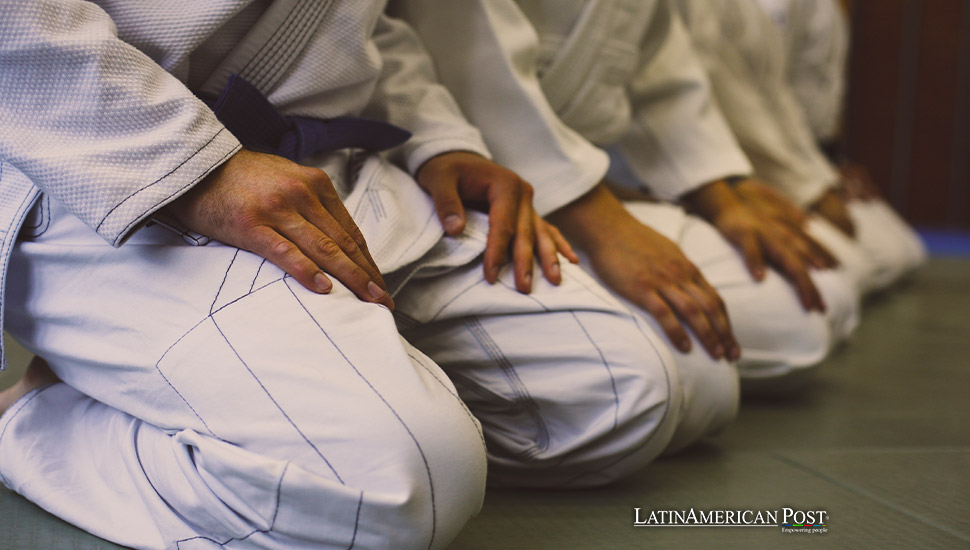The Global Rise of Brazilian Jiu-Jitsu: From Rio to the World

Brazilian jiu-jitsu, developed by the Gracie family in the early 20th century, has become one of the most globally recognized martial arts. From its humble beginnings in Brazil to worldwide expansion, this combat sport has left an indelible mark on modern martial arts.
Brazilian jiu-jitsu (BJJ), often called Gracie jiu-jitsu, is more than just a martial art—a symbol of cultural fusion and adaptation. The origins of BJJ trace back to the early 20th century when the Japanese master Mitsuyo Maeda arrived in Brazil in 1915. Maeda, a practitioner of traditional Japanese jiu-jitsu, began teaching his martial arts to a select group of students, one of whom was a young Brazilian named Carlos Gracie, and this moment marked the beginning of what would become a revolutionary transformation of the ancient martial art.
Carlos Gracie and his younger brother Helio adapted Japanese jiu-jitsu techniques to suit better the physical attributes of smaller, less powerful fighters. Unlike the original form, which relied heavily on strength and size, Brazilian jiu-jitsu emphasized leverage, technique, and strategic grappling. Helio, in particular, became a living testament to the effectiveness of the new style. Weighing only 60 kilos and lacking in physical strength, Helio’s ability to defeat much more prominent and vigorous opponents—including the Brazilian boxing champion, a renowned capoeira master, and even the world sumo champion—demonstrated the practicality and power of the Brazilian adaptation.
By the 1920s, the Gracie brothers had established a jiu-jitsu academy in Rio de Janeiro, where they began to teach and refine their techniques. This marked the official birth of Brazilian jiu-jitsu, a martial art that would eventually spread across Brazil and the globe.
From Brazil to the U.S. and Beyond
For the first half of the 20th century, Brazilian jiu-jitsu remained a relatively localized phenomenon, practiced primarily within Brazil. However, the Gracie family’s ambition to spread their martial art beyond the borders of their home country began to take shape in the 1970s when family members moved to the United States. Initially, the art attracted a small but dedicated group of practitioners, primarily martial artists, looking for new techniques to enhance their skill set.
It wasn’t until the 1980s and early 1990s that Brazilian jiu-jitsu gained international recognition. As more Gracie family members moved abroad—teaching in cities across the U.S. and Europe—the sport’s influence grew. The Gracies also made their mark through competitive victories, with sensational wins over practitioners of other martial arts, showcasing the superiority of BJJ in no-holds-barred contests.
One of the pivotal moments in the globalization of Brazilian jiu-jitsu came in 1989 when Rorion Gracie founded the Gracie Academy in the U.S. and launched a television program that would forever change the martial arts world: the Ultimate Fighting Championship (UFC). The UFC’s early competitions were designed to pit practitioners of different martial arts against one another to determine which style was the most effective in actual combat. Royce Gracie, a relatively small and unassuming fighter, dominated the early UFC tournaments, using Brazilian jiu-jitsu to defeat more prominent and vigorous opponents. These victories cemented BJJ’s reputation as a superior combat style and fueled its rapid growth in the U.S. and beyond.
Brazilian jiu-jitsu’s international appeal was further bolstered by the rise of Mixed Martial Arts (MMA), a sport that blends techniques from various martial arts. Incorporating BJJ techniques into MMA competition showcased the effectiveness of ground fighting and submission holds, making BJJ a foundational element of modern MMA training.
Brazilian Jiu-Jitsu Goes Global
As Brazilian jiu-jitsu gained recognition through competitions like the UFC and the growing popularity of MMA, its influence began to spread rapidly. By the early 2000s, BJJ had become a global phenomenon, with academics and practitioners in every corner of the world. The International Brazilian Jiu-Jitsu Federation (IBJJF), the sport’s governing body, now boasts members from over 300 academies across more than 30 countries, primarily based in the U.S., followed by Germany, Portugal, France, and Japan.
Brazilian jiu-jitsu’s international expansion can be attributed to its effectiveness as a martial art and its adaptability. Instructors from Brazil began opening academies in foreign countries, often responding to demand from local fitness centers, universities, and martial arts enthusiasts. In many cases, these academies maintained formal or informal affiliations with their Brazilian counterparts, helping to preserve the integrity of the sport while promoting its growth.
BJJ also benefited from Hollywood’s embrace of martial arts. Movies featuring fight scenes incorporating jiu-jitsu techniques helped popularize the sport among mainstream audiences. Additionally, adopting BJJ training by police forces and military units in the U.S. and several Arab countries, such as Jordan and the United Arab Emirates, added legitimacy to the art, demonstrating its practical applications in real-world combat and self-defense scenarios.
Instructors regularly travel across the globe to lead seminars, training camps, and workshops, providing students in distant countries with the opportunity to learn from world-class black belts. These international events not only spread the knowledge and techniques of Brazilian jiu-jitsu but also foster a sense of community among practitioners worldwide, creating a global network of martial artists united by their shared passion for the sport.
The Future of Brazilian Jiu-Jitsu
Today, Brazilian jiu-jitsu is more than just a martial art—it is a global movement. The sport has far surpassed its origins in Brazil, becoming the world’s most widely practiced form of jiu-jitsu. The IBJJF, headquartered in Irvine, California, and Rio de Janeiro, continues to organize international tournaments that attract competitors from all over the globe.
What sets Brazilian jiu-jitsu apart from other martial arts is its technical prowess and accessibility. As Helio Gracie intended, the art is designed for people of all ages, sizes, and physical abilities. This inclusivity has made it a popular choice for both men and women, young and old, professional fighters and hobbyists alike. The sport’s emphasis on strategy, technique, and patience over brute strength makes it appealing to a broad demographic.
Moreover, Brazilian jiu-jitsu has become a tool for social change. In Brazil and other countries, many young people from underprivileged backgrounds have used the sport as a path to success. Through BJJ, they have gained opportunities to travel, compete, and build careers as instructors, fighters, and entrepreneurs. In doing so, they have helped to internationalize the sport further, opening new academies and spreading the art to even more corners of the world.
Also read: American Football Takes Root: NFL’s Historic Game in Soccer-Crazed Brazil
The globalization of Brazilian jiu-jitsu has also fostered a sense of unity and camaraderie among its practitioners. Regardless of nationality, language, or background, those who train in BJJ share a common bond—a commitment to discipline, perseverance, and self-improvement. This global community is one of the sport’s greatest strengths and ensures its continued growth in the years to come.





